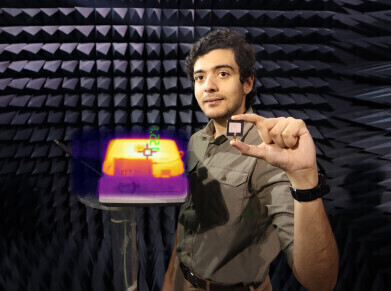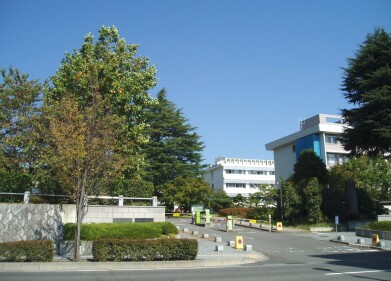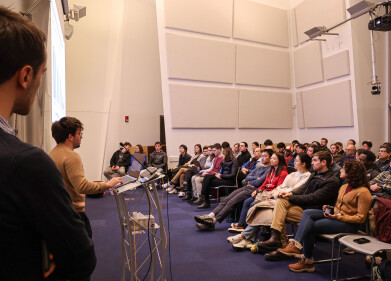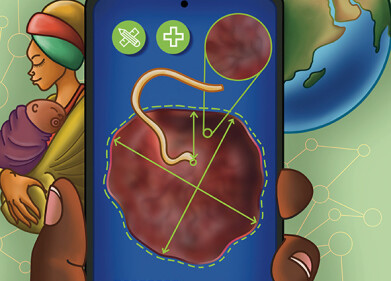-
 Mahmoud Wagih
Mahmoud Wagih
Research News
Moulding temperature sensing into shape
Jan 16 2024
A new method of measuring temperature through the interaction of a soft and flexible 'skinx sensor' with electromagnetic waves has been developed by engineers led by researchers from the University of Glasgow. The sensor’s ability to absorb and reflect radio-frequency (RF) signals varies with atmospheric heat or cold, enabling temperature measurement across a record-breaking range from 30°C to more than 200°C.
Temperature sensors are found in almost all electronic devices, with the global market for the technology valued at between $5-8b.
Typical temperature sensors, or thermistors, change resistance in response to changes in temperature usually operating in narrow ranges of temperature variation; an array of different thermistors might be needed to cover a wide sensing range.
Made from carbon fibres and silicon rubber the ‘smart skin’ sensor, said to be highly durable could help make cheaper and more sustainable wireless sensors, while reducing the number of devices required to cover the same temperature sensing range.
Dr Mahmoud Wagih, UK IC Research Fellow and Lecturer at the University of Glasgow, led the study. “Sensors are the main interface between the analogue world and smart devices,” he said. “To communicate real-world changes in measurements like temperature or humidity to wireless smart devices, those measurements first need to be digitised.
“We designed a simple soft composite using common silicone and carbon fibres, which can be easily moulded into any shape. These skin-like substrates could be used to design antennas over large areas, which can then radiate signals that are highly sensitive to temperature changes.
“Many researchers have used RF and microwave devices to measure liquid formulations, temperature, humidity and other physical and chemical parameters. However, this level of sensitivity has not been demonstrated before.”
Researchers from the University of Southampton supported the development of the flexible, stretchable sensor material, which could be easily integrated into bendable electronics and smart fabrics and collaborators from Loughborough University worked to characterise the new material’s electrical properties, demonstrating how it functioned up to a frequency of 26 GHz, into the spectrum of 5G communications technologies. The team suggest that with “anisotropic” properties that change how the material interacts with electric fields in different directions, the composite could be further tailored to enhance or reduce sensitivity to specific wireless signals and underpin future applications such as vital sign monitoring, radar sensing, satellite communications and 6G wireless networks.
Funded by the UK Engineering and Physical Sciences Research Council, Dr Wagih is now leading a project to find new applications in sustainable and biodegradable wireless electronics.
Dr Wagih said: “We are delighted to start further research on functional and natively stretchable materials for body-centric wireless sensing, building on our track record in cutting-edge RF sensing. The UK is already a leader in applied microwave engineering and advanced materials, and we hope that collaborative research like this will help lead to results which can find commercial applications."
‘Wide-range soft anisotropic thermistor with a direct wireless radio frequency interface’, is published in Nature Communications.
More information online
Digital Edition
Lab Asia 31.6 Dec 2024
December 2024
Chromatography Articles - Sustainable chromatography: Embracing software for greener methods Mass Spectrometry & Spectroscopy Articles - Solving industry challenges for phosphorus containi...
View all digital editions
Events
Jan 22 2025 Tokyo, Japan
Jan 22 2025 Birmingham, UK
Jan 25 2025 San Diego, CA, USA
Jan 27 2025 Dubai, UAE
Jan 29 2025 Tokyo, Japan


















